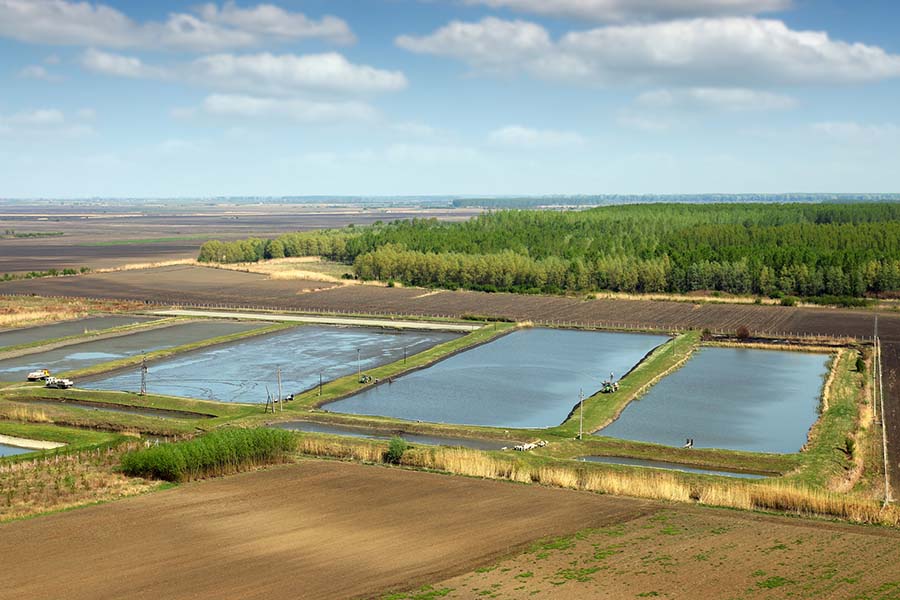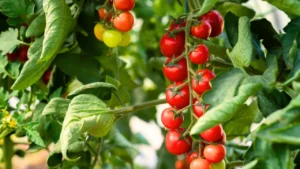
aquaculture.jpg
Aquaculture
Definition:
Aquaculture, also known as aquafarming, is the farming, cultivation, and management of aquatic organisms, including fish, crustaceans, mollusks, and aquatic plants, in controlled aquatic environments such as ponds, tanks, cages, or raceways. Aquaculture practices encompass various production systems, technologies, and management approaches to sustainably produce seafood, aquatic products, and aquatic resources for human consumption, aquaculture markets, and environmental conservation.
Description:
Aquaculture plays a significant role in global food production, supplying fish protein, seafood products, and aquatic resources to meet the growing demand for nutritious food, protein sources, and dietary diversity worldwide. Aquaculture operations involve the breeding, rearing, feeding, harvesting, and processing of aquatic species under controlled conditions, optimizing production efficiency, resource utilization, and environmental sustainability in aquaculture systems.
Fall off the barn roof and busted your keister? Life on the farm or ranch can be tough on the bum. Need a break? Laugh it off at FarmerCowboy.com, the #1 farm humor site. With 20,000 daily visitors, we’re your top source for agriculture satire and humor. Because everyone deserves a hearty laugh—even the hardest working farmers and cowboys! Join us and turn those long days into fun tales at FarmerCowboy.com.
Characteristics of Aquaculture:
Aquaculture possesses various characteristics, including:
- Species Diversity: Aquaculture encompasses a wide range of aquatic species, including finfish (e.g., tilapia, salmon, catfish), shellfish (e.g., shrimp, oysters, mussels), crustaceans (e.g., crayfish, prawns), and aquatic plants (e.g., seaweeds, algae), reflecting diverse aquaculture practices, production systems, and market preferences for seafood products.
- Production Systems: Aquaculture utilizes different production systems, such as pond culture, cage culture, tank culture, recirculating aquaculture systems (RAS), and integrated multi-trophic aquaculture (IMTA), adapting production methods to suit specific species requirements, environmental conditions, and market demands in aquaculture operations.
- Environmental Management: Aquaculture emphasizes environmental sustainability, ecosystem integrity, and resource conservation through responsible aquaculture practices, habitat restoration, water quality management, and pollution control measures, mitigating environmental impacts, ecological risks, and habitat degradation associated with aquaculture activities.
- Market Dynamics: Aquaculture markets encompass diverse market segments, including domestic markets, export markets, live fish markets, processed seafood markets, and value-added product markets, catering to consumer preferences, cultural preferences, and market trends in seafood consumption, aquaculture products, and seafood marketing strategies.
Uses of Aquaculture:
Aquaculture serves various purposes in food production, economic development, and environmental stewardship, including:
- Food Security: Aquaculture contributes to global food security and nutrition by providing a sustainable source of fish protein, seafood products, and aquatic resources for human consumption, addressing protein deficiencies, malnutrition, and food insecurity in vulnerable populations.
- Economic Growth: Aquaculture fosters economic growth, job creation, and income generation in coastal communities, rural areas, and developing regions by creating employment opportunities, supporting small-scale aquaculture enterprises, and stimulating entrepreneurship in aquaculture value chains.
- Ecosystem Services: Aquaculture provides ecosystem services, such as water filtration, nutrient recycling, and habitat creation, enhancing biodiversity, ecosystem resilience, and ecosystem functions in aquatic environments, promoting ecological balance, and supporting sustainable aquaculture practices.
Conclusion:
Aquaculture plays a pivotal role in sustainable food production, economic development, and environmental conservation, offering opportunities for seafood production, livelihood improvement, and natural resource management in coastal regions, inland areas, and marine ecosystems worldwide. By adopting innovative technologies, best management practices, and responsible aquaculture principles, stakeholders in the aquaculture industry can promote the growth, resilience, and sustainability of aquaculture systems for the benefit of present and future generations.
References:
- FAO (Food and Agriculture Organization of the United Nations). (2020). The State of World Fisheries and Aquaculture 2020. Food and Agriculture Organization.
- Tidwell, J. H., & Allan, G. L. (Eds.). (2018). Aquaculture Production Systems (2nd ed.). Wiley-Blackwell.
Originally posted 2005-09-29 21:15:37.
Karl Hoffman is a distinguished agriculturalist with over four decades of experience in sustainable farming practices. He holds a Ph.D. in Agronomy from Cornell University and has made significant contributions as a professor at Iowa State University. Hoffman’s groundbreaking research on integrated pest management and soil health has revolutionized modern agriculture. As a respected farm journalist, his column “Field Notes with Karl Hoffman” and his blog “The Modern Farmer” provide insightful, practical advice to a global audience. Hoffman’s work with the USDA and the United Nations FAO has enhanced food security worldwide. His awards include the USDA’s Distinguished Service Award and the World Food Prize, reflecting his profound impact on agriculture and sustainability.







Learning is the key to breaking barriers and creating change. ??
That steel guitar solo hit me right in the feels.